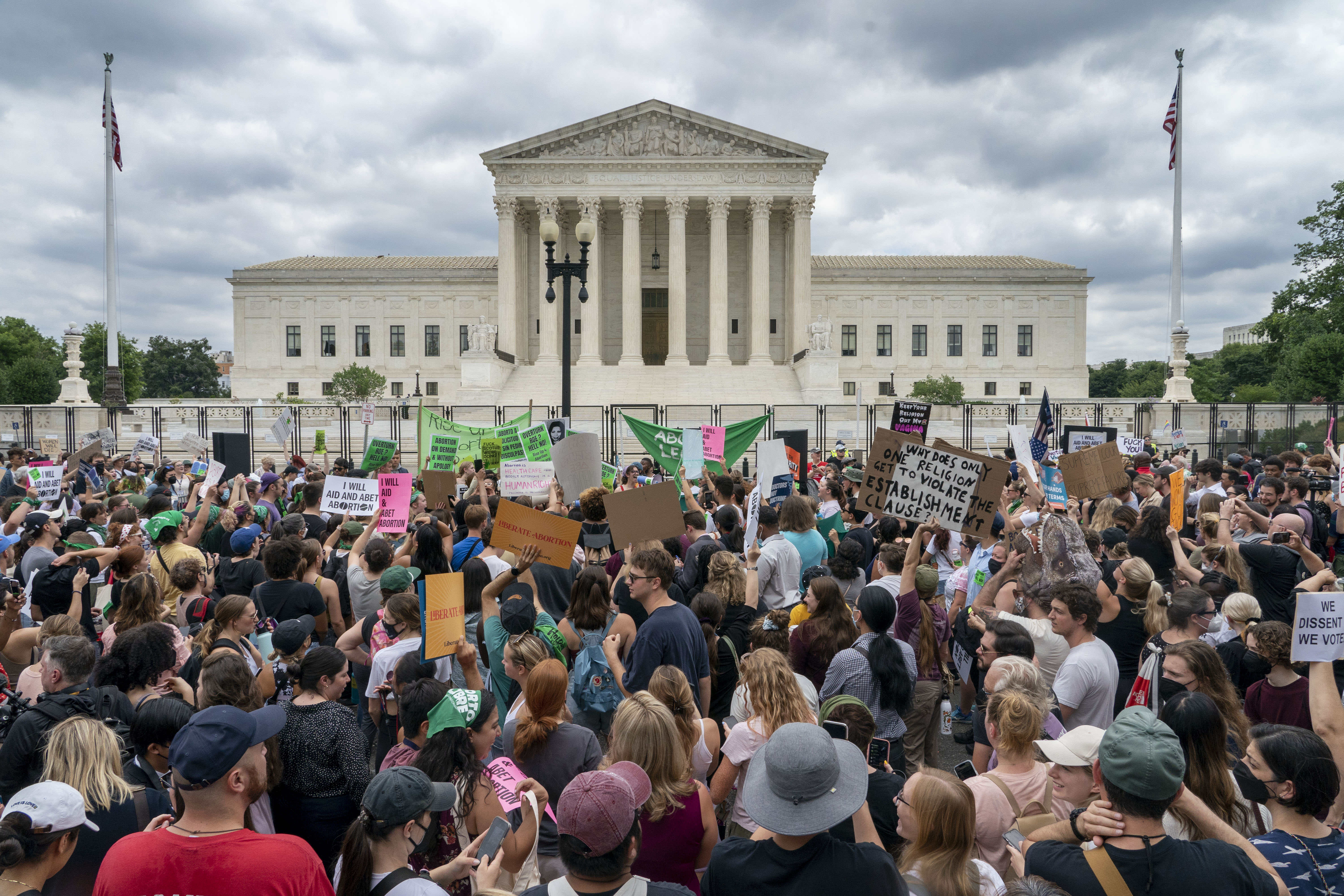Women's Rights & Issues
Related: About this forumThe crooked path from the ERA's failure to Roe's end
The crooked path from the ERA’s failure to Roe’s end
The overturning of Roe was the result of a process that started not in 2016, but more than 40 years ago.
Donald Earl Collins
Lecturer of History at American University in Washington, DC.
 ?resize=770%2C513
?resize=770%2C513
Abortion-rights protesters regroup and protest following Supreme Court's decision to overturn Roe v. Wade, federally protected right to abortion, outside the Supreme Court in Washington, Friday, June 24, 2022 [AP Photo/Gemunu Amarasinghe]
In recent years, nearly everything in the US has turned like buttermilk under the hot summer sun. The US Supreme Court’s decision to overrule Roe v Wade and take away the constitutional right to an abortion is just the latest example. A few days after the Court’s decision, the rape of a 10-year-old girl gained international attention. Gerson Fuentes, 27, who confessed to the crime, had raped the child on at least two occasions. As if the raping of a 10-year-old was not brutal enough, Ohio’s newly activated anti-abortion law made it so that this child could not seek an abortion in the state, all because she was more than six weeks into her pregnancy. There is more than enough blame for America’s cultural decline to go around, especially with one-time Senate Majority leader Mitch McConnell and former President Donald J Trump stacking the Supreme Court with three misogynistic anti-abortion ideologues between 2017 and 2020. But the truth is, the US arrived at this precipice long before 2017. In fact, it reached it 40 years ago, when it failed to ratify an amendment to its constitution that would have codified women’s equality.
Demise of the ERA
In 1972, bipartisan majorities in the US House and the Senate passed what should have been the 28th Amendment to the US Constitution. By 1973, the Equal Rights Amendment (ERA) – the key passage of which is that “equality of rights under the law shall not be denied or abridged by the United States or by any State on account of sex” – had been ratified by 30 states. In order to be adopted as a constitutional amendment, that number needed to reach 38 by 1982. It failed to do so – revealing both the US’s misogyny and unwillingness to protect the civil rights of half of its citizens and the limits of second-wave, white women’s “universal” feminism.
Although the ERA made no direct mention of reproductive rights, the failure to ratify it helped pave the meandering path to ripping them away. If women had been given equal rights to white men, as the ERA required, that would have included rights over their own bodies and would, therefore, have been the basis for codifying Roe v Wade into law. But thanks to far-right activist Phyllis Schlafly and her “pro-life, pro-family” STOP ERA (Stop Taking Our Privileges Equal Rights Amendment) rallies, enthusiasm for ERA soon began to wane. So what exactly was Schlafly’s argument against the Act? “Since the women are the ones who bear the babies … our laws and customs then make it the financial obligation of the husband to provide the support …. And this is exactly and precisely what we will lose if the Equal Rights Amendment is passed,” Schlafly said in a speech just weeks after the Supreme Court’s Roe v Wade decision in March 1973.
. . . .
The glide path that has reproductive rights on a bed in an Intensive Care Unit in the US began when a once-no-brainer piece of legislation codifying women’s equality soured under the hot sun of institutional misogyny and whiteness. It is now why a 10-year-old rape survivor can be questioned for getting an abortion across state lines instead of receiving the care and sympathy any child victim of penetrable assault and potentially death-by-pregnancy deserves.
https://www.aljazeera.com/opinions/2022/8/5/the-crooked-path-from-the-eras-failure-to-roes-end